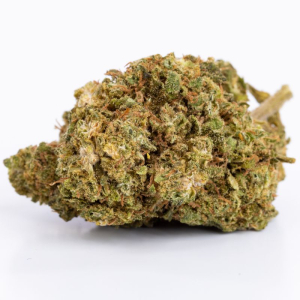What is CBDP?
Cannabidiphorol is a molecule present in the hemp plant, like CBD or THC. Being part of the cannabinoid family, it therefore also enters into interaction with the endocannabinoid system present in the human body.
The latter is made up of a network of neurotransmitters and receptors which acts on numerous functions, such as the quality of sleep, stress, mood, appetite and inflammation of the body. This is why cannabinoids are of so much interest to the scientific community!
Early studies on CBDP demonstrate similarities with CBD, which could provide it with interesting therapeutic properties. However, these studies are still in their early stages and we do not have sufficient hindsight to know with certainty the effects of CBDP on the body and the organism. According to initial observations, it is the CB1 and CB2 receptors that have the most interactions with this molecule.
This molecule was discovered recently, because it is rarely present in the hemp plant. It was necessary to improve extraction and analysis techniques to be able to study it fully. It is CO2 extraction which makes it possible to obtain cannabinoids from the plant, but the molecules are sometimes then studied using chemical syntheses.
Science and CBDP
Cannabidiphorol is also called CBD-heptyl or CBD-C7 by the scientific community. It has a unique chemical structure, particularly in terms of functional groups. In particular, we noticed the presence of a hydroxypropyl group (OH-CH2-CH2-CH2-) attached to its side chain, which differentiates CBDP from CBD or THC for example.
This particularity causes differences in actions in terms of therapeutic effects. At the time of writing, studies are still underway. On the other hand, CBDP would be recognized as “with low psychoactive effects”, unlike THC which is a psychotropic drug.
The differences between CBDP and CBD (cannabidiol)
Of course, cannabidiphorol is compared to cannabidiol, its counterpart popular with thousands of consumers around the world. Although they are both derived from hemp, their difference in chemical structure potentially gives them different therapeutic effects.
As mentioned, the difference at the level of functional groups influences the interactions of these two molecules with the endocannabinoid system of the human body.
The therapeutic effects of CBD are now fully demonstrated, in particular the anxiolytic, anti-inflammatory, analgesic and antioxidant effects. For the CBDP, they have yet to be demonstrated and necessarily have a different field of action.
These two molecules could therefore perhaps have complementary uses, subject to clinical studies being completed.

The potential therapeutic effects of CBDP
Preliminary studies of CBDP have shown effects on neurological pathways, which may help with certain nervous system disorders. The neuroprotective potential of CBDP could have interesting properties for diseases such as Alzheimer's or Parkinson's.
CBDP also has anti-inflammatory and analgesic properties which can help reduce the feeling of pain or treat ailments such as osteoarthritis and arthritis. All chronic pain could be affected.
The anti-inflammatory effect is of particular interest for neurodegenerative, dermatological diseases or for immunological disorders, or for skin problems such as acne or psoriasis. Likewise, this molecule could reduce the intensity of headaches and pain linked to difficult digestion.
Studies have also demonstrated the antioxidant properties of CBDP, which can thus act on cellular aging by limiting the chain reaction of free radicals.
In terms of mental health, the antidepressant and anxiolytic properties of CBDP could help treat depression as well as anxiety disorders.
Finally, tests are underway on anti-epileptic effects, which could relieve and reduce the intensity of epileptic seizures.
Remember that these studies are at preliminary stages and that it takes time to validate these results.
321CBD’s opinion on CBDP (cannabidiphorol)
Our bias is to offer only quality, controlled products whose effects have been validated by the scientific community with sufficient hindsight.
It is for this reason that we have made the decision to not market any CBDP-based products to date. Please note that the legality of this molecule may differ from one country to another, depending on government decisions.
You can discover our range of CBD oils, CBG oils, or CBN oils, all composed of cannabinoid molecules that are good for the body and mind.















